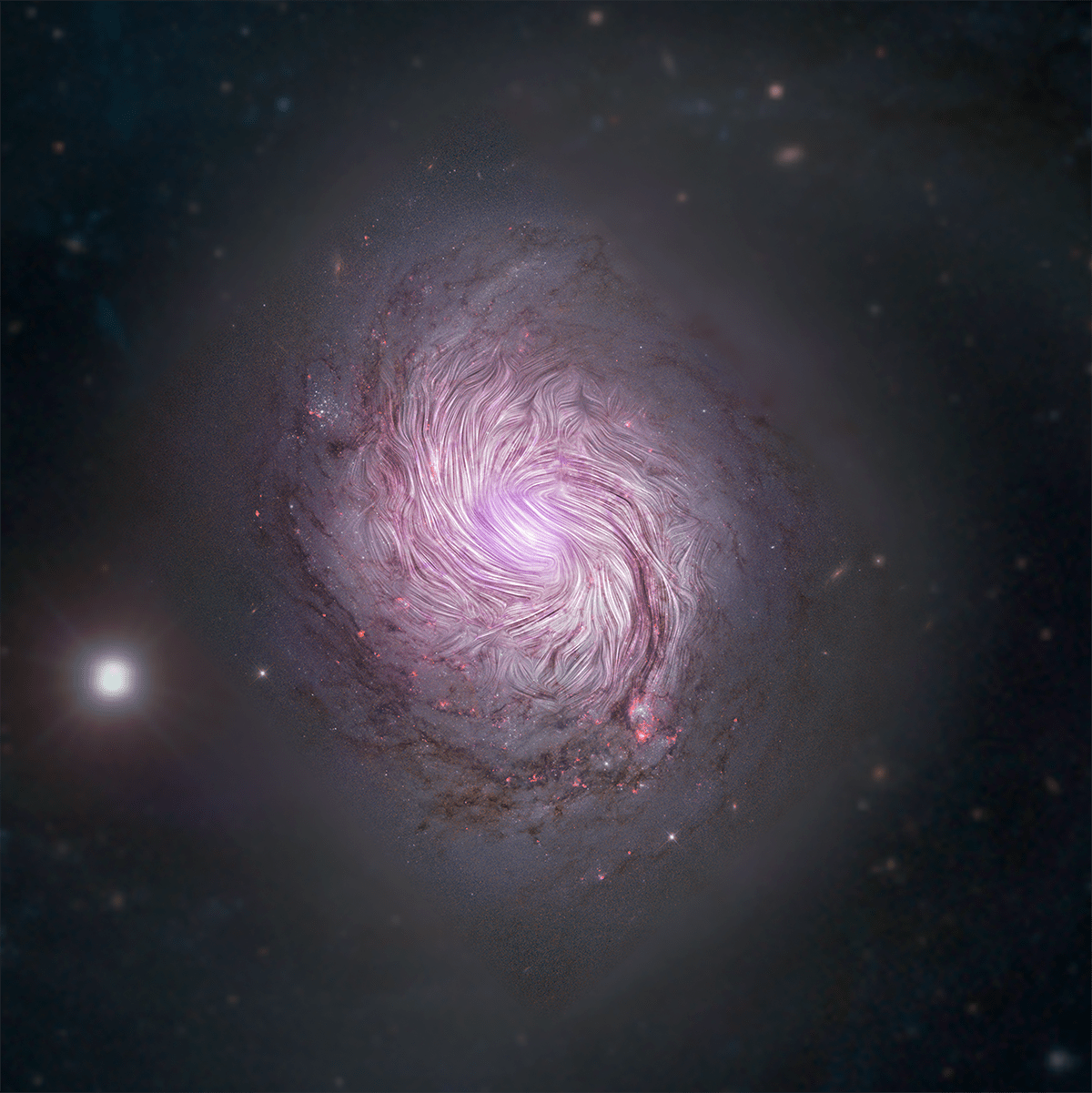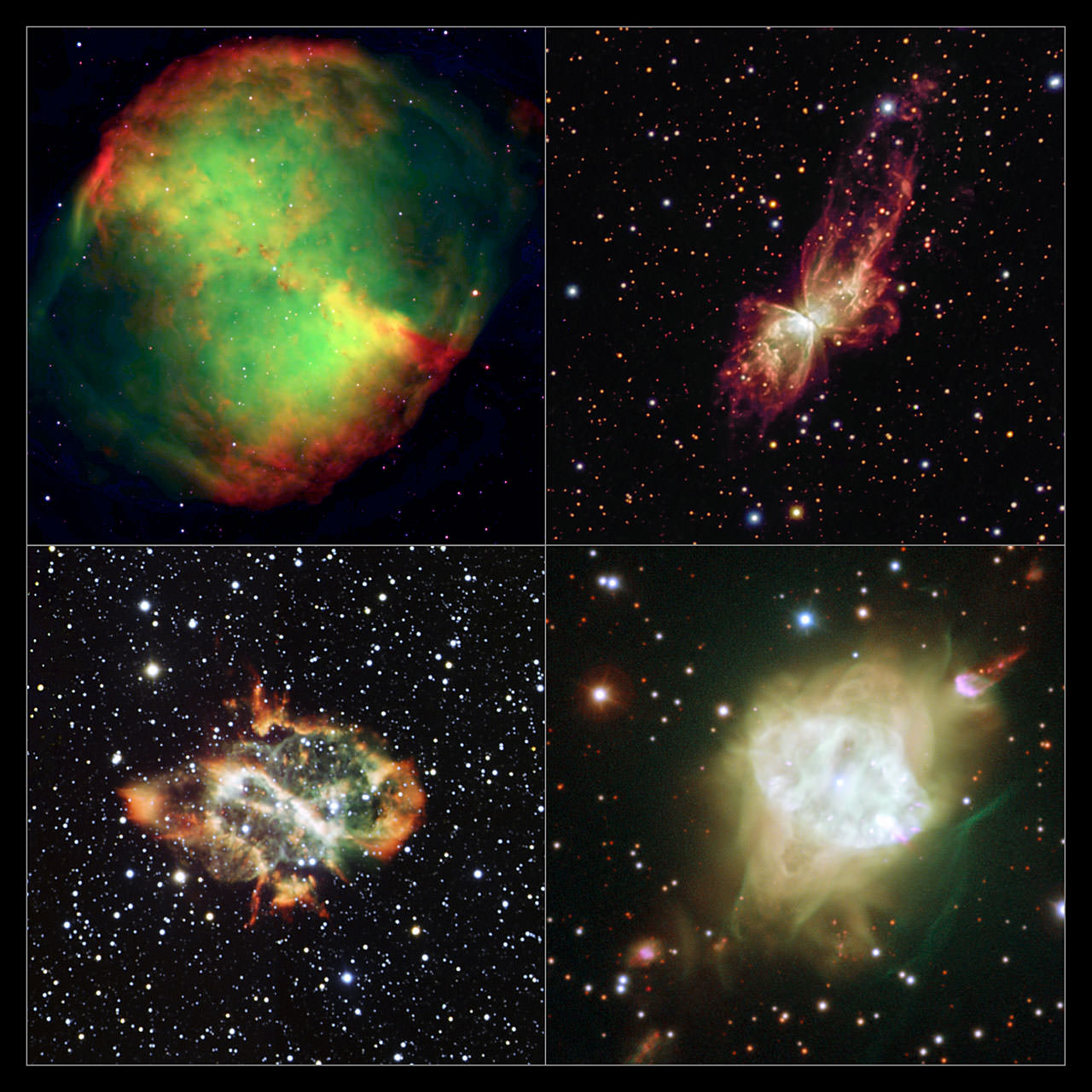While taking a look at more than a hundred planetary nebulae in our galaxy’s central bulge, astronomers using the NASA/ESA Hubble Space Telescope and ESO’s New Technology Telescope have found something rather incredible. It would appear that butterfly-shaped planetary nebulae – despite their differences – are somehow mysteriously aligned!
We know that stars similar to our Sun end their lives shedding their outer layers into space. Like a reptile’s intact skin casing, this stellar material forms a huge variety of shapes known as planetary nebulae. One of the more common forms is bipolar – which creates a bowtie or butterfly shape around the progenitor star.
Like snowflakes, no two planetary nebulae are exactly alike. They are created in different places, under different circumstances and have very different characteristics. There is no way that any of these nebulae, nor the responsible stars that formed them, could have interacted with other planetary nebulae. However, according to a new study done by astronomers from the University of Manchester, UK, there seems to be a rather incredible coincidence… A surprising number of these stellar shells are lining up the same way from our galactic point of view.
“This really is a surprising find and, if it holds true, a very important one,” explains Bryan Rees of the University of Manchester, one of the paper’s two authors. “Many of these ghostly butterflies appear to have their long axes aligned along the plane of our galaxy. By using images from both Hubble and the NTT we could get a really good view of these objects, so we could study them in great detail.”
According to the news release, the astronomers observed 130 planetary nebulae in the Milky Way’s central bulge. They identified three different types, and closely examined their characteristics and appearance.
“While two of these populations were completely randomly aligned in the sky, as expected, we found that the third — the bipolar nebulae — showed a surprising preference for a particular alignment,” says the paper’s second author Albert Zijlstra, also of the University of Manchester. “While any alignment at all is a surprise, to have it in the crowded central region of the galaxy is even more unexpected.”
What causes a planetary nebula to take on a particular shape? For some time, astronomers figured their appearance may have been affected by the rotation of the star system in which they form. Many factors could contribute, such as whether or not the spawning star is a binary, or if it has a planetary system. Both of these factors could help mold the eventual outcome of the shed stellar material. However, bipolar planetary nebulae are the most extreme. Astronomers theorize their shapes are the product of jets blowing mass from the binary system perpendicular to the orbit.
“The alignment we’re seeing for these bipolar nebulae indicates something bizarre about star systems within the central bulge,” explains Rees. “For them to line up in the way we see, the star systems that formed these nebulae would have to be rotating perpendicular to the interstellar clouds from which they formed, which is very strange.”
We accept the fact that the properties of the parent stars are the biggest contributor to a planetary nebula’s shape, but this new information gives an enigmatic edge to the final outcome. Not only is each unique, but the Milky Way itself adds even more complexity. The entire central bulge rotates around the galactic center, and this bulge may have considerably more influence than we expected… the influence of its magnetic fields. The researchers suggest this “orderly behavior of the planetary nebulae” may have occurred because a strong magnetic field was present when the bulge formed. Since planetary nebulae nearer to us don’t line up in the same orderly fashion, it would be logical to assume these magnetic fields were much stronger when our galaxy first formed.
“We can learn a lot from studying these objects,” concludes Zijlstra. “If they really behave in this unexpected way, it has consequences for not just the past of individual stars, but for the past of our whole galaxy.”
Original Story Source: ESO News Release.


